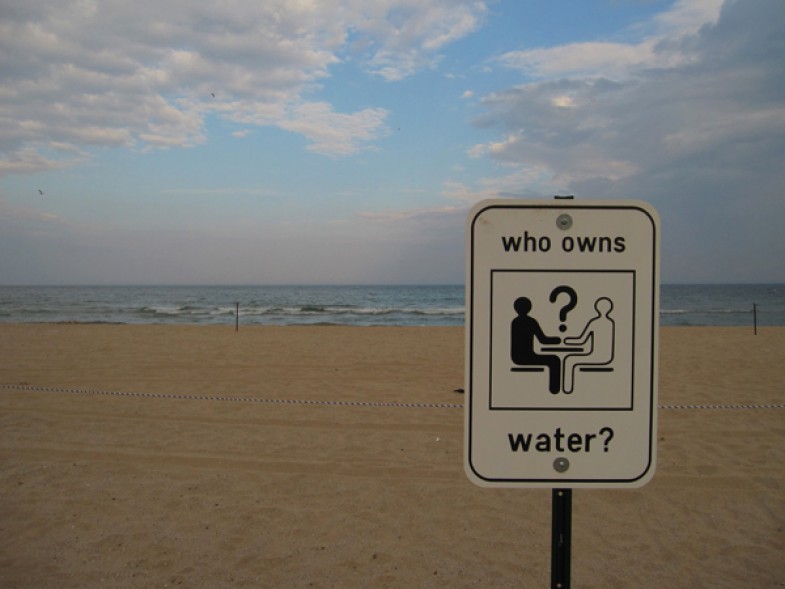What is a social charter, and how does it apply to the Great Lakes?
Historically, a social charter is a tool that communities have used to define norms, rules, boundaries, claims, and practices for protecting the commons. A social charter is a process that results in a living document.
We’re calling the social charter for the Great Lakes the “Great Lakes Commons Charter.”
The Great Lakes Commons Charter process
We know that we must transform Great Lakes governance to ensure that the Lakes will be protected for generations to come. On The Commons is assembling a Great Lakes Charter Development Team from many different communities and Nations to lead a Great Lakes Commons Charter development process in the bioregion.
Creating the Great Lakes Commons Charter will engage thousands of individuals, organizations, and communities around the bioregion. The process will also help surface the Lake peoples’ beliefs and commitments. In doing so, together we will assert the legitimacy of our ideas and our role in shaping the governance for the Great Lakes. What’s more, the organizing methodology for the Great Lakes Commons Charter is congruent with our vision, which is for all of us to reclaim our right to care and role to play in creating a new future.
In essence, the Great Lakes Commons Charter is an organizing effort to build agreement and leadership for commons-based governance in the Great Lakes region. It will allow us to accomplish several things simultaneously:
- To collaboratively develop and assert a set of guiding principles for the care of our waters;
- To activate people in the region to take leadership in water stewardship in accordance with these principles;
- To legitimize and lay the groundwork for a commons approach to the governance of our waters (i.e., an approach to governance that is bio-regional, ecosystem-based, multi-generational in perspective, and empowering of local communities).
This Charter process gives us a way to “build the road by walking,” or in other words, to create the basis for new governance while we are organizing people to claim their rightful role in defining and leading it.
The Great Lakes Commons Charter — A living document
The product of the Great Lakes Commons Charter process will be a living, written document—one that will take shape over time and be passed on from community to community. The actions of thousands of individuals around the Lakes will come alive as agreements, principles and, ultimately, new governance criteria for decision-making within the pages of the charter. As such, the document itself will embody the belief that the Lakes are sacred, irreplaceable, and must be restored and protected for all in perpetuity.
How is the Great Lakes Commons Charter different from a petition or resolution?
The Great Lakes Commons Charter is a paradigm shifting approach that incorporates multi-generational thinking. Unlike a petition or resolution, it engages people beyond a signature and develops active participation in the co-creation of new governance principles.
The Great Lakes Commons Charter will draw on both commons and Indigenous frameworks.
Through the Great Lakes Commons Charter creation process, we are working to braid together Indigenous and commons knowledge as a foundation for transforming governance in the Great Lakes bioregion. Both long-standing frameworks offer viable models for governing the ecosystem as a whole, and, taken together, they provide a concrete path toward a new future.
This work is unprecedented, and through it, we seek to undo the unjust dynamic that has excluded many communities, particularly Indigenous communities, from playing a central role in defining water policy for the Great Lakes. Our methodology, which is congruent with our vision, is not about inviting people to our table—it’s about building a new table together comprised of meaningful and equitable alliances and relationships, one where all people matter and all voices are heard.
Timeframe
Our goal is to circulate the first draft of the charter to all participating individuals and communities within a year. This will galvanize increased involvement and engage more communities in the process over year two.
Once the circulation is complete, we will all gather at an assembly to say “enough is enough!” and demand a different governance approach for the Great Lakes—an approach we have worked together to create.
How Can I Contribute?
We invite you to contribute to the Great Lakes Commons Charter process in many ways: through discussion, through art, through online participation, and through actions. You can:
- Check out the Great Lakes Commons toolkit for information on how you can organize a charter session in your home, library, or school.
- Visit the participate page to add your voice directly to the Great Lakes Commons Charter.
- Contribute to the I AM WATER public art project, an artful way to lend your voice to the Great Lakes Charter that will result in a large, moveable, indoor/outdoor sculpture consisting of hundreds of paper ‘ripples.’
If you care about the health and well-being of the Great Lakes, we hope you join us in the Great Lakes Commons Charter creation process. Don’t forget to visit www.greatlakescommons.org for more information. You can also contact us at info@greatlakescommons.org with questions.

